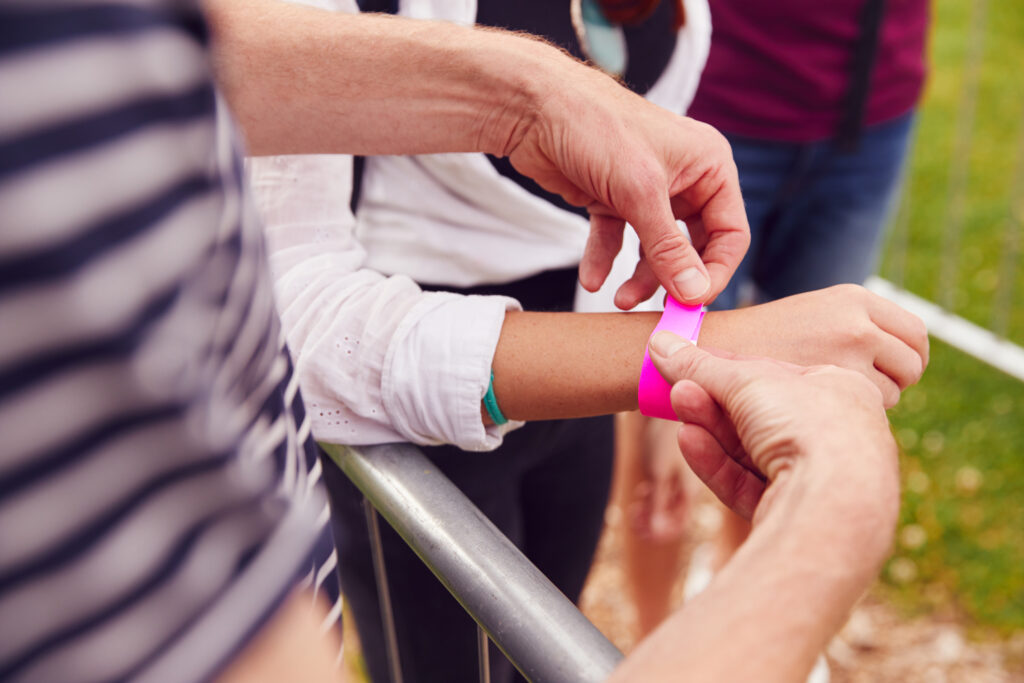Amusement parks must continuously innovate if they are to surprise and delight guests. From taller rollercoasters to expanded food menus, every aspect of a park needs examination and improvement year over year.
One notable innovation making waves in the amusement park industry is wearable technology. Virtual Reality headsets are an obvious example in parks such as the recently opened Super Nintendo World. However, a subtler but more far-reaching technology is found in wearable wristbands, commonly known as Radio-Frequency Identification (RFID) wristbands.
The rise of wearable technology
Streamlining the logistics of a theme park is vital to creating an experience that is as efficient and enjoyable as possible for guests. Many will be familiar with the labyrinth of tunnels underneath Disney World theme parks, which famously allow employees to move through the park at impossible speeds without impeding guests.
It’s this streamlining that sets amusement parks apart. With wearable technology, theme parks benefit from:
- Reduced reliance on staff, particularly at entry points
- Increased efficiency for guests
- Lower costs than traditional access systems
Going ticketless
For instance, wearable technology allows for a shift away from conventional tickets and ID cards to digital-only access.
With watch-like wristbands on their persons, guests essentially become multifunctional tools. RFID wristbands are embedded with radio frequency tags, allowing them to communicate seamlessly with scanners and readers throughout a park. This tag stores a guest’s necessary information on their wrists, facilitating secure transactions and providing identification without needing paper tickets or IDs.
Wristband usage is on the rise
While many other forms of wearable technology exist (such as virtual reality displays and smart glasses), wristbands have become the prominent choice in amusement parks.
This trend matches the global popularity of technologically enhanced wristbands, which has soared since the early 2010s. As of Q3 2021, 56% of wearables are watches or wristbands. The Apple Watch alone consists of 53% of the wearables market in revenue, with wristband usage rising due to their accessibility and ease of use.
Why choose wristbands?
Guests are unlikely to lose them
One of the most subtle advantages of RFID wristbands is that they are difficult to lose. When securely fastened, guests are unlikely to take a wristband off or put it down anywhere as they would with an ID or a token. They don’t fall out of pockets while guests are on rides, and they can even be forgotten about in between use without being lost.
This feature makes them the ideal wearable technology for amusement parks, as RFID wristbands are simple enough to use and secure enough that all parks are easily accessible regardless of age or mental faculties.
Waterproofing for water parks
An additional benefit of RFID wristbands lies in their waterproof capabilities, depending on the materials used.
While some RFID wristbands are made of paper embedded with an RFID microchip, many are made of more durable materials such as plastic or fabric. These wristbands can withstand water exposure, ensuring durability and functionality even during water-based attractions within the park.
Seamless access and enhanced security
Few things annoy amusement park guests as much as waiting in line. By eliminating the need for paper IDs or tickets, RFID wristbands integrate identity and credit card information. With wristbands, guests can easily access the park and its attractions without relying on wallets, backpacks, or fanny packs.
RFID wristbands also improve security. IDs, tickets, and credit cards are unnecessary, so they won’t be visible to potential thieves in the park. If nothing beyond an RFID wristband is used to pay for refreshments or enter rides, it becomes far more challenging to steal potentially harmful information.
The cleanliness factor
Touchless technology simplifies interactions and has gained particular significance in a post-COVID world.
Amusement park guests are more aware than ever of the importance of minimizing physical contact. Touching as few surfaces as possible is critical, but handing IDs or credit cards to employees who have handled every other credit card in the park is not ideal.
Wearables use sensor technology, meaning they only have to come near the target sensor to work, reducing touchpoints and keeping employees and guests safer.
The applications are scalable
The versatility of RFID wristbands extends beyond admissions, with applications in locker rentals and guest item storage. Gone are the days of guests struggling to remember PINs or trying to locate the correct key. All they need is to use the sensor on the wristband to lock or unlock their valuables.
Additionally, these wristbands can seamlessly grant access to hotel rooms and VIP areas for parks offering lodging and accommodations.
Wearable technology is here to help
Amusement parks are continually embracing emerging innovations. From streamlining access and reducing operational costs to providing accessibility and ensuring hygiene in a post-pandemic world, RFID wristbands have quickly become integral to modern amusement parks.
Wearables represent one of the latest technologies that are simple to implement but entirely transformative to a guest’s experience. Park guests can only benefit from innovations that make their experience as frictionless as possible.
Insurance coverage helps you focus on improving guest experiences
McGowan Program Administrators (MPA) provides specialized Amusement & Entertainment Insurance that caters to the unique risks associated with amusement parks. This coverage safeguards businesses in the attractions industry, including amusement parks, water parks, family entertainment centers, and more. With MPA in your corner, amusement companies can focus on creating memorable experiences for their visitors while improving operations through new technology such as wearables. To learn more about our comprehensive insurance policies, contact us today.


